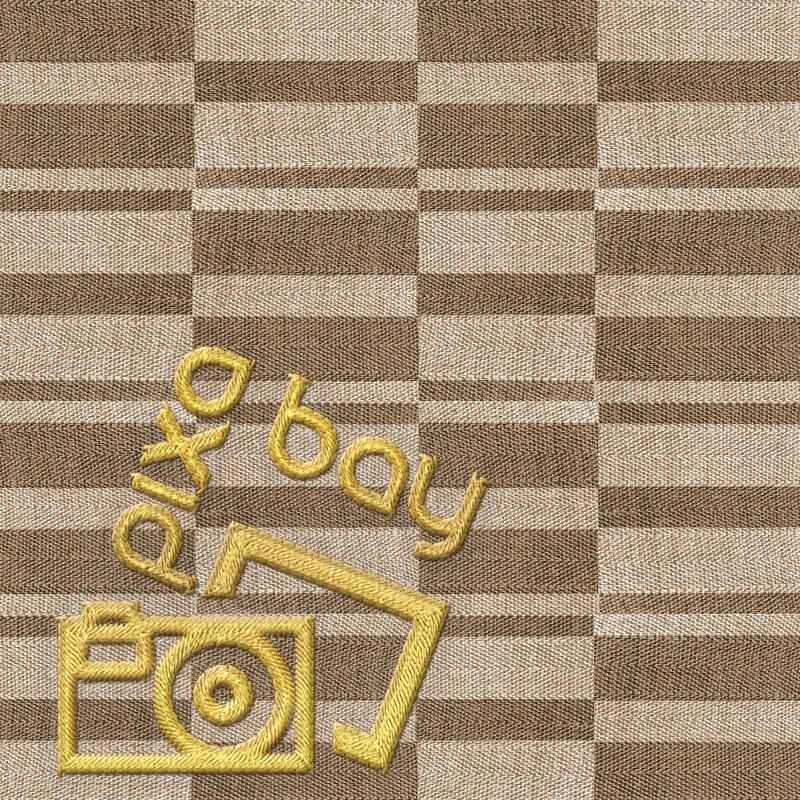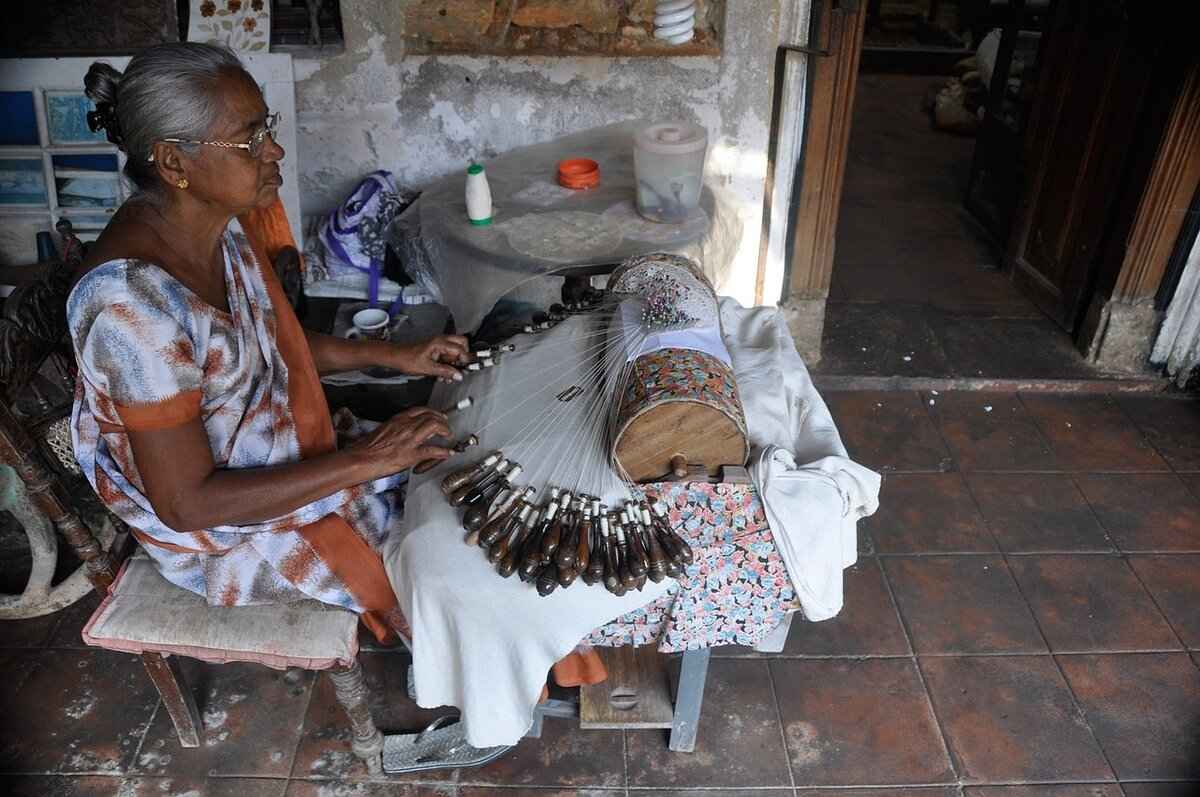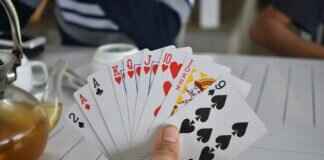This article explores the rich history, techniques, and styles of Bengali Kantha stitching, a traditional craft that beautifully combines art and utility in textiles.
What is Kantha Stitching?
Kantha stitching is a traditional embroidery technique originating from Bengal. It is characterized by its unique running stitch, which transforms old fabrics into beautiful quilts, showcasing creativity and sustainability in textile art.
Historical Significance of Kantha
The history of Kantha stitching dates back centuries, deeply rooted in the culture of rural Bengal. It reflects the socio-economic conditions and artistic expressions of the women who practiced it. Kantha’s origins can be traced to ancient Bengal, where it began as a practical way to repurpose old clothing. Over time, it evolved into an intricate art form, influenced by Bengali culture with motifs drawn from folklore, nature, and daily life, making each piece a narrative tapestry.
Techniques of Kantha Stitching
The techniques involved in Kantha stitching are diverse, ranging from basic running stitches to more complex patterns, each requiring skill and patience to master. Various types of Kantha exist, each with distinct styles and purposes. Understanding these types helps appreciate the diversity within this traditional craft.
- Sujni Kantha: Known for its intricate patterns, often used for decorative items like quilts and wall hangings.
- Bajra Kantha: Features a rustic style, made from coarser fabrics, reflecting the everyday life of rural communities.
Materials Used in Kantha Stitching
The materials for Kantha stitching are essential for its authenticity and quality. Typically, it involves layers of old sarees or cloth, along with cotton threads. Traditional Kantha often utilizes cotton fabrics, which are soft and durable, significantly impacting the final look and feel of the stitched piece. The selection of cotton threads is crucial for durability and vibrant colors that enhance the design.
Contemporary Uses of Kantha
Today, Kantha stitching has transcended its traditional boundaries, finding applications in fashion and home décor. The fashion industry has embraced Kantha, incorporating its unique patterns into clothing and accessories, making it a sought-after style in contemporary fashion. Kantha-inspired home décor items, such as cushion covers and table runners, add a touch of heritage to modern interiors.
Preserving the Art of Kantha
As Kantha stitching faces challenges in the modern world, efforts are being made to preserve this art form through workshops, exhibitions, and educational programs. Community-based initiatives are vital in promoting Kantha stitching among younger generations, ensuring that this traditional craft continues to thrive and evolve. Kantha stitching has gained global recognition, showcasing its beauty and cultural significance.
Conclusion: The Future of Kantha Stitching
The future of Kantha stitching looks promising, blending tradition with innovation. As artisans continue to explore new horizons, this beautiful craft remains a vital part of Bengal’s cultural heritage.

What is Kantha Stitching?
Kantha stitching is a traditional embroidery technique that hails from the vibrant region of Bengal, India. This art form is distinguished by its unique running stitch that not only serves decorative purposes but also provides strength and durability to the fabric. Originally, Kantha was a practical solution for repurposing old sarees and cloth scraps, transforming them into beautiful quilts and blankets. This process not only showcases the creativity of the artisans but also promotes sustainability by minimizing waste in textile production.
The beauty of Kantha lies in its intricate patterns and the stories woven into each piece. Artisans often draw inspiration from nature, folklore, and daily life, creating a rich tapestry of cultural narratives. Each stitch is a testament to the skill and patience of the embroiderer, making Kantha a true representation of Bengali heritage.
Kantha stitching has evolved over the years, adapting to modern tastes while retaining its traditional essence. Today, it is not just limited to quilts but has expanded into fashion and home décor, with items like cushion covers, bags, and clothing becoming increasingly popular. This evolution highlights the versatility of Kantha and its ability to blend seamlessly with contemporary design.
In conclusion, Kantha stitching is more than just an embroidery technique; it is a celebration of creativity, sustainability, and cultural identity. As artisans continue to innovate and adapt, this beautiful craft remains an integral part of Bengal’s rich artistic landscape.

Historical Significance of Kantha
The Historical Significance of Kantha Stitching
Kantha stitching is not merely an embroidery technique; it is a cultural narrative deeply rooted in the history of rural Bengal. This art form has been practiced for centuries, evolving from a practical necessity into a celebrated form of artistic expression. The origins of Kantha can be traced back to ancient times when women would repurpose worn-out fabrics, transforming them into functional quilts and covers. This practice not only reflects the resourcefulness of these women but also highlights their creativity and skill.
Initially, Kantha was a means to provide warmth and comfort to families, utilizing layers of old sarees and cloth. However, as time progressed, it developed into a vibrant art form characterized by intricate patterns and motifs. These designs often draw inspiration from nature, folklore, and daily life, making each piece a unique narrative tapestry that tells the story of the community.
Socio-Economic Context
The socio-economic conditions of rural Bengal played a crucial role in the evolution of Kantha stitching. It provided women with a source of income while allowing them to express their artistic talents. This dual purpose of utility and artistry contributed to the preservation of cultural identity, even as societal changes occurred. The stitches became a medium through which women could assert their presence and creativity in a patriarchal society.
The Role of Women
Women have been the primary custodians of Kantha stitching, passing down techniques and stories through generations. This tradition has fostered a sense of community and solidarity among women, as they gather to create and share their work. The art of Kantha has not only been a means of survival but also a way for women to connect with their heritage and each other.
In conclusion, the historical significance of Kantha stitching lies in its ability to reflect the cultural identity of Bengal. It encapsulates the resilience and creativity of the women who practice it, making it a vital component of the region’s heritage. As the world continues to evolve, the art of Kantha remains a testament to the enduring spirit of its creators.
Origins and Evolution
The Art of Bengali Kantha Stitching: History and Style Guide
Kantha stitching is not only a traditional embroidery technique but also a testament to the ingenuity of Bengali culture. This craft has a rich history that reflects the socio-economic conditions of rural Bengal. The origins of Kantha can be traced back to ancient times when women utilized discarded fabrics to create functional items. Initially, it served a practical purpose: to repurpose old clothing and textiles into usable quilts. However, as time progressed, Kantha evolved into a sophisticated art form, showcasing the artistic expressions of the women who practiced it.
The transformation of Kantha from a utilitarian craft to an intricate art form is fascinating. Women began to embellish their creations with elaborate designs and motifs, often inspired by their surroundings, folklore, and daily life. This evolution not only reflects the creativity of the artisans but also their resilience and resourcefulness in utilizing available materials.
The techniques of Kantha stitching vary widely, encompassing everything from simple running stitches to complex patterns that require significant skill and patience. Each piece tells a story, with designs that often symbolize cultural narratives or personal experiences. The cultural significance of these stitches cannot be overstated, as they represent the collective memory and heritage of the Bengali people.
As Kantha continues to adapt to modern trends, it remains deeply rooted in tradition. The integration of contemporary designs and techniques has broadened its appeal, attracting a global audience while preserving its essence. Today, Kantha is not just a craft; it is a vibrant expression of identity and culture, ensuring that this beautiful art form endures for future generations.
Influence of Bengali Culture
Bengali culture has played a pivotal role in shaping the art of Kantha stitching, a traditional embroidery technique that is both functional and artistic. The rich tapestry of Bengali life is vividly reflected in the motifs and themes that adorn each Kantha piece, transforming simple fabrics into intricate narratives.
At the heart of Kantha stitching lies a deep connection to folklore, where stories of gods, goddesses, and mythical creatures come alive through colorful threads. These motifs often draw inspiration from the vibrant natural environment of Bengal, including lush landscapes, blooming flowers, and various elements of rural life. This connection to nature not only enhances the visual appeal of Kantha but also embeds a sense of place and identity into each creation.
Furthermore, the everyday experiences of the Bengali people are intricately woven into the fabric of Kantha. Scenes depicting daily life, such as fishing, farming, and family gatherings, are commonly featured, making each piece a reflection of the community’s values and traditions. This storytelling aspect is what makes Kantha stitching unique; it serves as a narrative tapestry that preserves the history and culture of Bengal.
In addition to its aesthetic value, Kantha stitching also embodies the spirit of sustainability. Traditionally, it was a way for women to repurpose old sarees and cloth, transforming discarded materials into beautiful works of art. This practice not only showcases creativity but also highlights the resourcefulness of Bengali artisans, who have passed down their skills through generations.
As we continue to appreciate the beauty of Kantha stitching, it becomes evident that the influence of Bengali culture is not merely superficial. It runs deep, intertwining art with history, community, and environmental consciousness, making each Kantha piece a cherished artifact of cultural heritage.
Modern Adaptations
of Kantha stitching have emerged as a vibrant fusion of traditional craftsmanship and contemporary aesthetics. This evolution has not only preserved the rich heritage of this ancient art form but has also expanded its appeal to a broader, global audience.
In recent years, artisans have begun to experiment with innovative designs and techniques, integrating modern elements while maintaining the core essence of Kantha. This has resulted in a variety of products that range from fashion apparel to home décor, making Kantha a versatile choice for modern consumers.
- Fashion Forward: Designers are now incorporating Kantha into their collections, creating unique clothing pieces that celebrate this traditional craft. Items such as jackets, dresses, and accessories reflect the intricate patterns and vibrant colors of Kantha, appealing to fashion enthusiasts.
- Home Décor Innovations: Kantha has found a significant place in home décor. Products like cushion covers, bedspreads, and table runners showcase the artistry of Kantha while adding a touch of heritage to contemporary living spaces.
- Artistic Collaborations: Collaborations between contemporary artists and traditional Kantha artisans have led to the creation of unique art pieces. These collaborations often blend modern art styles with traditional stitching techniques, resulting in stunning visual narratives.
The global appreciation for Kantha has also led to an increase in online platforms and marketplaces where artisans can showcase their work. This accessibility allows consumers worldwide to connect with the rich cultural significance of Kantha while supporting the artisans directly.
Moreover, educational workshops and community initiatives are being organized to teach the younger generation about Kantha stitching. These programs ensure that the skills and stories behind this craft are passed down, fostering a sense of pride and continuity in the tradition.
In conclusion, the of Kantha stitching signify a beautiful balance between tradition and innovation. As this art form continues to evolve, it not only preserves the cultural heritage of Bengal but also enriches the global textile landscape.
Techniques of Kantha Stitching
The Techniques of Kantha Stitching are a rich tapestry of creativity and skill, reflecting the deep-rooted traditions of Bengali culture. This ancient embroidery technique not only serves as a form of artistic expression but also embodies the spirit of sustainability by repurposing old fabrics into new masterpieces.
At the heart of Kantha stitching lies the running stitch, a fundamental technique that forms the basis of many designs. However, the world of Kantha is far from simplistic. Artisans employ a variety of techniques that range from basic to intricate patterns. Here, we explore some of the key techniques that define this unique craft:
- Running Stitch: The most basic yet essential stitch, used to create outlines and simple patterns.
- Back Stitch: This technique allows for more defined lines and is often used in detailed designs.
- Chain Stitch: A decorative stitch that creates a chain-like effect, adding texture and depth to the embroidery.
- Cross Stitch: Used to create intricate motifs, this stitch adds a rich visual element to the overall design.
- Kantha Quilting: Involves layering multiple pieces of fabric, stitched together to create a quilted effect that is both functional and artistic.
Each of these techniques requires a high level of skill and patience. Mastering Kantha stitching is not merely about learning the stitches; it also involves understanding the cultural significance behind the motifs and patterns. Many artisans draw inspiration from nature, folklore, and daily life, making each piece a narrative that tells a story.
As artisans continue to innovate, blending traditional techniques with modern aesthetics, the art of Kantha stitching remains vibrant and relevant. This craft not only preserves the heritage of Bengal but also adapts to contemporary tastes, ensuring its place in the future of textile art.

Types of Kantha Stitching
The world of Kantha stitching is rich and diverse, encompassing various styles that reflect the cultural heritage of Bengal. Each type of Kantha serves a unique purpose, showcasing the skill and creativity of artisans. Understanding these different types not only enhances appreciation for this traditional craft but also highlights its adaptability and relevance in contemporary settings.
1. Sujni Kantha
Sujni Kantha is renowned for its intricate designs, often featuring elaborate motifs that tell stories or depict scenes from nature and folklore. This style is primarily used for decorative items such as quilts, wall hangings, and bedcovers. The detailed embroidery and vibrant colors make Sujni Kantha a favorite among collectors and art enthusiasts alike.
2. Bajra Kantha
Bajra Kantha, in contrast, embraces a more rustic aesthetic. Typically crafted from coarser fabrics, this type reflects the everyday life and struggles of rural communities. Bajra Kantha items are functional, often used as blankets or wraps, and they embody a sense of practicality while still being artistically expressive.
3. Lep Kantha
Lep Kantha is characterized by its layered construction, where multiple pieces of fabric are stitched together to create thicker quilts. This style is particularly popular in colder regions as it provides warmth and comfort. The stitching patterns in Lep Kantha are generally simpler, focusing more on the functionality of the quilt while still maintaining aesthetic appeal.
4. Kantha for Fashion
In recent years, Kantha stitching has transcended traditional uses, finding its way into the fashion industry. Designers incorporate Kantha patterns into clothing and accessories, creating unique pieces that celebrate this age-old craft. This modern adaptation has helped Kantha reach a broader audience, merging tradition with contemporary style.
In conclusion, the various types of Kantha stitching showcase the versatility and depth of this traditional craft. From decorative pieces to functional textiles, each type contributes to the rich tapestry of Bengali culture. Understanding these distinctions not only enhances appreciation for the artisans’ craftsmanship but also ensures the preservation of this beautiful art form for future generations.
Sujni Kantha
is a remarkable form of traditional Bengali embroidery that captivates with its intricate patterns and artistic flair. This unique style is not merely a craft but a vibrant expression of cultural heritage, often utilized to create decorative items such as quilts, wall hangings, and various home décor pieces. The beauty of Sujni Kantha lies in its detailed embroidery, which transforms simple fabric into stunning works of art.
The technique of Sujni Kantha typically involves a series of running stitches, which are used to outline elaborate motifs and designs. These patterns often reflect themes from nature, folklore, and daily life, making each piece a narrative tapestry that tells a story. The stitches are not just functional; they are an integral part of the artistic expression that defines this craft.
Traditionally, Sujni Kantha was created using layers of old sarees or fabric, showcasing the sustainability aspect of this art form. Artisans would repurpose discarded textiles, breathing new life into them through the art of embroidery. This practice not only preserves the environment but also honors the history of the materials used.
In contemporary times, Sujni Kantha has evolved, finding its place in modern fashion and home décor. Designers are now incorporating these intricate patterns into clothing, accessories, and interior design items, appealing to a global audience. The fusion of traditional craftsmanship with modern aesthetics has made Sujni Kantha a sought-after style in today’s market.
As we look to the future, the preservation of Sujni Kantha remains crucial. Efforts are being made through workshops and community initiatives to ensure that this beautiful art form continues to thrive. By engaging younger generations and promoting awareness, the legacy of Sujni Kantha can be sustained for years to come.
In conclusion, Sujni Kantha is more than just embroidery; it is a celebration of culture, creativity, and sustainability. As it adapts to contemporary trends, this art form continues to enchant and inspire, bridging the gap between tradition and modernity.
Bajra Kantha
is a unique style of Kantha stitching that embodies the essence of rural life in Bengal. This traditional embroidery technique is characterized by its use of coarser fabrics, which not only adds to its durability but also reflects the rustic charm of the countryside. Bajra Kantha is often crafted from old sarees and other textiles, repurposing them into functional yet artistic pieces that serve as a testament to the creativity and resourcefulness of rural artisans.
The artistic expression found in Bajra Kantha is deeply intertwined with the everyday experiences of the communities that create it. Each piece tells a story, often depicting scenes from daily life, nature, and local folklore. This connection to the environment and culture makes Bajra Kantha not just a craft but a vibrant narrative woven into fabric.
| Characteristics of Bajra Kantha | Details |
|---|---|
| Fabric Type | Coarser, repurposed fabrics |
| Design Themes | Everyday life, nature, folklore |
| Functionality | Practical use in daily life |
| Artistic Value | Reflects cultural heritage |
In addition to its aesthetic appeal, Bajra Kantha serves a practical purpose, often being used as quilts, wall hangings, or even clothing. The functional aspect of this stitching style makes it an integral part of the daily lives of those in rural Bengal, providing warmth and comfort while also showcasing their artistic skills.
As the world increasingly values sustainability, Bajra Kantha stands out as a prime example of how traditional crafts can adapt to modern sensibilities. By embracing the principles of recycling and repurposing, artisans contribute not only to their livelihoods but also to the preservation of their cultural identity.
In conclusion, Bajra Kantha is more than just a stitching technique; it is a rich tapestry of life, culture, and sustainability. Its rustic style and artistic expression make it a significant part of Bengal’s heritage, ensuring that the stories of rural communities continue to be told through the fabric of their lives.

Materials Used in Kantha Stitching
The materials utilized in Kantha stitching are pivotal to its authenticity and overall quality. This traditional craft, rooted in the rich cultural heritage of Bengal, primarily incorporates layers of old fabrics, such as sarees, along with vibrant cotton threads. The careful selection of these materials not only enhances the aesthetic appeal but also contributes to the sustainability of the craft.
| Material Type | Description |
|---|---|
| Old Sarees | Old sarees are often repurposed in Kantha stitching, providing a unique texture and color palette. Each piece tells a story, reflecting the history of the fabric. |
| Cotton Threads | Cotton threads are preferred for their strength and ability to hold vibrant dyes, which enhance the intricate designs typical of Kantha embroidery. |
| Other Fabrics | While cotton is predominant, other fabrics like silk and linen may also be used, depending on the desired finish and purpose of the Kantha piece. |
Fabric Choices
- Cotton: Soft, breathable, and durable, cotton is the most common fabric used in Kantha stitching.
- Silk: Offers a luxurious finish and is often used for decorative pieces.
- Linen: Provides a rustic look and is sometimes chosen for its natural texture.
Thread Selection
The choice of thread is equally important in Kantha stitching. Cotton threads are favored for their durability and vibrant colors, which play a crucial role in bringing the designs to life. Artisans often select threads that complement the fabric colors, ensuring a harmonious blend.
Ultimately, the materials chosen for Kantha stitching not only define the quality and authenticity of the final piece but also reflect the rich cultural narratives embedded in this traditional art form. By using recycled fabrics and natural threads, artisans contribute to a sustainable practice that honors both tradition and creativity.
Fabric Choices
play a crucial role in the art of Kantha stitching, influencing both the aesthetic and functional aspects of the finished product. Traditionally, artisans have favored cotton fabrics due to their softness and durability. These characteristics not only ensure comfort but also enhance the longevity of the stitched items, making them suitable for everyday use.
The choice of fabric significantly impacts the final look and feel of the stitched piece. For instance, the use of vibrant, patterned cotton can create a visually stunning quilt that tells a story, while the choice of muted tones may evoke a sense of nostalgia and tradition. The layering of different fabrics, often sourced from old sarees, adds depth and texture, allowing artisans to showcase their creativity.
Moreover, the weight and thickness of the fabric can influence the stitching technique used. Thicker fabrics may require more robust stitching methods to ensure durability, while lighter fabrics allow for more intricate designs. This adaptability makes cotton an ideal choice, as it can be manipulated in various ways to achieve the desired effect.
| Fabric Type | Characteristics | Common Uses |
|---|---|---|
| Cotton | Soft, durable, and breathable | Quilts, wall hangings, and apparel |
| Silk | Luxurious, smooth, and shiny | Decorative items and formal wear |
| Linen | Strong, absorbent, and textured | Home décor and casual wear |
In addition to cotton, other fabrics like silk and linen are also sometimes incorporated into Kantha stitching. Each type of fabric brings its unique qualities and enhances the overall narrative of the piece. By understanding the implications of fabric choices, both artisans and consumers can appreciate the depth of thought that goes into each Kantha creation.
In conclusion, the fabric selection in Kantha stitching is not merely a practical consideration but a vital aspect of the artistic expression. The interplay of colors, textures, and patterns allows artisans to convey stories and emotions, making each piece a unique work of art.
Thread Selection
is a pivotal aspect of Kantha stitching, significantly influencing the overall quality and aesthetic of the finished piece. The choice of thread not only affects the durability but also enhances the visual appeal of the intricate designs crafted through this traditional embroidery technique.
When it comes to Kantha stitching, cotton threads are the most commonly preferred option. This preference stems from their remarkable strength, which ensures that the stitches hold together well over time, even with regular use. Additionally, cotton threads are available in a wide array of vibrant colors, allowing artisans to create stunning visual contrasts and intricate patterns that bring their designs to life.
Moreover, the texture of cotton threads contributes to the overall feel of the Kantha piece. The softness of cotton makes it easy to work with, allowing for smooth stitching that enhances the fluidity of the designs. This is particularly important in Kantha, where the running stitch is a fundamental technique. The right thread can make the stitching process more enjoyable and efficient, ultimately resulting in a more polished final product.
It is also essential to consider the weight and thickness of the thread. Lighter threads are suitable for delicate designs, while thicker threads can be used to create bolder, more pronounced stitches. This versatility allows artisans to experiment with different styles, ensuring that each piece is unique and reflective of their personal artistic vision.
In summary, selecting the right thread is crucial for Kantha stitching. The use of cotton threads not only enhances the strength and durability of the finished product but also adds vibrancy and texture, making each piece a true work of art. By understanding the importance of thread selection, artisans can elevate their Kantha creations to new heights, celebrating this beautiful craft.

Contemporary Uses of Kantha
In today’s fashion landscape, Kantha stitching has transcended its traditional roots, evolving into a versatile art form that seamlessly integrates with modern aesthetics. This remarkable craft, which originated in Bengal, is now celebrated not only for its historical significance but also for its innovative applications in various domains.
Fashion Industry Integration
The fashion industry has enthusiastically embraced Kantha, incorporating its distinctive patterns into a wide range of clothing and accessories. Designers are drawn to the unique textile art that Kantha offers, utilizing its intricate designs to create statement pieces that stand out in contemporary wardrobes. From ethnic wear to casual attire, Kantha-embroidered garments have become a sought-after choice, appealing to fashion enthusiasts who appreciate both style and sustainability.
Home Décor Trends
In the realm of home décor, Kantha has made significant inroads, with items such as cushion covers, table runners, and wall hangings showcasing the beauty of this craft. Kantha-inspired décor adds a touch of heritage and warmth to modern interiors, making it a popular choice among homeowners looking to infuse their spaces with cultural significance. The vibrant colors and intricate patterns of Kantha textiles create a unique ambiance, bridging the gap between traditional craftsmanship and contemporary design.
Bridging Tradition with Modern Trends
As Kantha stitching continues to gain popularity, it serves as a bridge between the past and the present. Artisans are now experimenting with new techniques and materials, ensuring that this ancient craft remains relevant in today’s fast-paced world. By reinterpreting traditional designs through a modern lens, Kantha stitching not only preserves its rich heritage but also captivates a global audience, fostering appreciation for this exquisite art form.
In conclusion, the contemporary uses of Kantha stitching highlight its adaptability and enduring appeal. As it finds a place in both fashion and home décor, Kantha continues to celebrate the beauty of tradition while embracing the innovations of the modern era.
Fashion Industry Integration
The fashion industry has increasingly recognized the beauty and versatility of Kantha stitching, a traditional embroidery technique from Bengal that has transcended its roots to become a prominent trend in contemporary fashion. This unique art form, characterized by its intricate patterns and vibrant colors, has found its way into various clothing and accessory lines, making it a sought-after style among fashion enthusiasts worldwide.
Embracing Tradition in Modern Fashion
Designers are now incorporating Kantha’s distinctive motifs into everything from dresses to handbags, allowing consumers to experience a piece of Bengali culture through their wardrobe. The use of recycled fabrics not only adds a sustainable element to fashion but also tells a story, as each piece is crafted from layers of old textiles, preserving the history embedded in the fabric.
Popular Kantha-Inspired Fashion Items
- Apparel: Dresses, tunics, and jackets featuring Kantha embroidery are popular for their unique aesthetic and comfort.
- Accessories: Bags, scarves, and jewelry that showcase Kantha designs have become staples in many fashion collections.
- Footwear: Some brands have even started to integrate Kantha patterns into their footwear lines, offering a bold and artistic touch.
Consumer Appeal
The appeal of Kantha in the fashion industry lies not only in its visual charm but also in its cultural significance. Consumers are increasingly drawn to products that reflect their values, and Kantha’s roots in sustainability and craftsmanship resonate with a growing audience that prioritizes ethical fashion choices.
Conclusion
As the fashion industry continues to evolve, the integration of Kantha stitching exemplifies a successful blend of tradition and contemporary style. By embracing this art form, designers are not only celebrating Bengali heritage but also paving the way for future generations to appreciate and engage with this beautiful craft.
Home Décor Trends
have evolved significantly over the years, reflecting individual tastes and cultural influences. One of the standout trends in recent times is the incorporation of Kantha-inspired home décor items, which have gained immense popularity for their unique blend of aesthetic appeal and cultural significance.
These items, such as cushion covers and table runners, not only enhance the visual charm of modern interiors but also serve as a testament to the rich heritage of Bengali craftsmanship. Kantha stitching, with its intricate patterns and vibrant colors, transforms ordinary textiles into extraordinary pieces of art.
Why Choose Kantha-Inspired Décor?
- Cultural Heritage: Each Kantha piece tells a story, often reflecting themes from nature, folklore, and daily life in Bengal.
- Eco-Friendly: Utilizing recycled fabrics, Kantha stitching promotes sustainability, making it a responsible choice for environmentally conscious consumers.
- Versatility: Kantha items seamlessly blend into various interior styles, from traditional to contemporary, adding a touch of warmth and character.
Moreover, the textural richness of Kantha pieces adds depth to any space. Whether it’s the soft feel of a cushion cover or the vibrant patterns of a table runner, these items invite touch and admiration. As more people seek to incorporate unique and meaningful elements into their homes, Kantha-inspired décor continues to rise in popularity.
Conclusion: In a world where mass production often overshadows artistry, Kantha-inspired home décor items stand out as a celebration of tradition and creativity. By choosing these pieces, you not only beautify your space but also support a craft that embodies the spirit of community and sustainability.

Preserving the Art of Kantha
As the world evolves, traditional crafts like Kantha stitching face numerous challenges, including the decline of skilled artisans and changing consumer preferences. However, there is a growing movement dedicated to preserving this unique art form, ensuring its survival for future generations. Various initiatives are being implemented to keep the spirit of Kantha alive through workshops, exhibitions, and educational programs.
- Workshops: Local artisans and organizations are hosting workshops to teach Kantha techniques to both beginners and experienced crafters. These hands-on sessions not only pass on skills but also foster a sense of community among participants.
- Exhibitions: Art exhibitions showcasing Kantha works are being organized in galleries and cultural festivals. These events highlight the beauty and intricacy of Kantha stitching, attracting art enthusiasts and potential buyers alike.
- Educational Programs: Schools and institutions are incorporating Kantha stitching into their curriculum. By educating young minds about this craft, they instill appreciation and respect for traditional art forms.
Moreover, community-based initiatives play a crucial role in promoting Kantha stitching among younger generations. These programs encourage local artisans to share their knowledge and stories, creating a bridge between the past and the present. Such efforts not only help preserve the craft but also empower communities economically.
In addition, Kantha stitching has gained global recognition. Collaborations with international artists and participation in global art fairs have brought this traditional craft to a wider audience, fostering appreciation and demand worldwide. The fusion of traditional and contemporary designs has opened new avenues for Kantha, ensuring its relevance in today’s fashion and home décor markets.
In conclusion, while the challenges facing Kantha stitching are significant, the concerted efforts to preserve this art form through various initiatives offer hope. By engaging the community, promoting education, and embracing global opportunities, Kantha stitching can continue to thrive, celebrating its rich heritage and artistic significance.
Community Initiatives
play a crucial role in ensuring the survival and evolution of Kantha stitching, a traditional craft that embodies the rich cultural heritage of Bengal. As modern society shifts towards rapid technological advancements, the importance of preserving traditional crafts cannot be overstated. Engaging younger generations through community programs fosters a deeper appreciation for these art forms.
One of the primary ways to promote Kantha stitching is through workshops and training sessions. These gatherings not only teach the techniques involved in Kantha but also emphasize its cultural significance. By inviting skilled artisans to share their knowledge, younger participants can learn firsthand the intricate details and stories behind each stitch. This hands-on approach ensures that the craft is not only preserved but also revitalized with new ideas and styles.
Moreover, collaborative projects between local communities and schools can further enhance engagement. By integrating Kantha stitching into school curricula, students can gain practical skills while learning about their cultural heritage. This initiative can spark interest among students, encouraging them to explore their creativity through traditional art forms.
Additionally, community-based exhibitions and fairs can showcase the beauty of Kantha stitching to a broader audience. These events provide artisans with the platform to display their work, allowing them to connect with potential buyers and art enthusiasts. Such exposure can significantly boost the local economy while fostering a sense of pride in the community.
In conclusion, community initiatives are essential for the promotion and preservation of Kantha stitching among younger generations. By creating opportunities for learning, collaboration, and exposure, we can ensure that this beautiful craft continues to thrive and evolve, bridging the past with the future.
Global Recognition
of Kantha stitching has significantly evolved over the years, marking its presence on the international stage. This traditional embroidery technique, rooted in the rich culture of Bengal, has garnered attention through various exhibitions and collaborations that highlight its artistic and cultural significance.
As the world becomes more interconnected, Kantha stitching has transcended geographical boundaries. Artisans and designers are now showcasing these intricate textiles in global exhibitions, where they are celebrated not only for their aesthetic appeal but also for their storytelling elements. Each piece of Kantha carries a narrative, often depicting themes from nature, folklore, and everyday life, which resonate with audiences worldwide.
Moreover, collaborations between local artisans and international fashion designers have further propelled Kantha into the limelight. These partnerships have led to innovative adaptations of traditional designs, creating a fusion that appeals to contemporary tastes while respecting the craft’s heritage. This blending of styles has played a crucial role in fostering a deeper appreciation for Kantha stitching, as it is now recognized not just as a craft but as a vital part of cultural heritage.
In addition to exhibitions, the rise of social media platforms has enabled artisans to showcase their work to a global audience. Platforms like Instagram and Pinterest have become vital tools for sharing the beauty of Kantha stitching, allowing artisans to connect directly with potential buyers and enthusiasts. This visibility has helped in creating a community of supporters who advocate for the preservation of this art form.
Furthermore, educational programs and workshops aimed at teaching Kantha stitching techniques have emerged, ensuring that younger generations can learn and appreciate this traditional craft. These initiatives are essential for sustaining the art form and ensuring its relevance in a rapidly changing world.
In conclusion, the global recognition of Kantha stitching is a testament to its beauty and cultural significance. As exhibitions, collaborations, and community initiatives continue to thrive, the appreciation for this traditional craft is set to grow, ensuring that its legacy endures for future generations.

Conclusion: The Future of Kantha Stitching
The future of Kantha stitching is not only promising but also vibrant, as it continues to blend tradition with innovation. This beautiful craft, deeply rooted in Bengal’s cultural heritage, is evolving as artisans explore new horizons and adapt to contemporary trends.
Kantha stitching, once primarily a means of recycling old fabrics into quilts, is now being embraced by a broader audience. As the demand for sustainable and ethically produced textiles rises, Kantha’s appeal has expanded beyond its traditional boundaries. Artisans are experimenting with new designs, colors, and materials, ensuring that the craft remains relevant in today’s fashion and home décor markets.
Furthermore, the integration of Kantha into modern fashion has opened up exciting avenues for artisans. Designers are incorporating Kantha motifs into clothing and accessories, allowing the rich history of this craft to reach a global audience. This fusion of old and new not only enhances the aesthetic value of contemporary garments but also preserves the cultural significance of Kantha stitching.
Community initiatives play a crucial role in the future of Kantha. Workshops and training programs are being organized to educate younger generations about this traditional craft, ensuring its survival. By engaging local communities and providing them with the skills needed to continue this art form, the legacy of Kantha stitching is safeguarded for future generations.
In conclusion, as artisans and designers continue to innovate while respecting the roots of Kantha stitching, this exquisite craft will undoubtedly thrive. By blending tradition with modernity, Kantha stitching not only preserves Bengal’s cultural heritage but also adapts to the evolving tastes of a global market, making it a vital part of the contemporary textile landscape.
Frequently Asked Questions
- What materials are commonly used in Kantha stitching?
Kantha stitching primarily uses layers of old sarees or cotton cloth, along with strong cotton threads. The choice of fabric greatly influences the texture and durability of the final piece.
- How can I learn Kantha stitching?
Learning Kantha stitching can be a delightful journey! You can start by joining local workshops, enrolling in online courses, or following tutorial videos. Practice is key, so don’t hesitate to experiment with different stitches and patterns!
- Is Kantha stitching eco-friendly?
Absolutely! Kantha stitching promotes sustainability by repurposing old fabrics, reducing waste, and creating beautiful items that are both functional and artistic. It’s a fantastic way to embrace eco-friendly practices!
- What types of items can be made with Kantha stitching?
Kantha stitching can transform various items, including quilts, cushion covers, bags, and even clothing. Its versatility allows for endless creativity, making each piece unique and special.
- Can Kantha stitching be integrated into modern fashion?
Yes! The fashion industry has embraced Kantha, incorporating its vibrant patterns into contemporary clothing and accessories. This fusion of tradition and modernity has made Kantha a trendy choice in today’s fashion scene.














